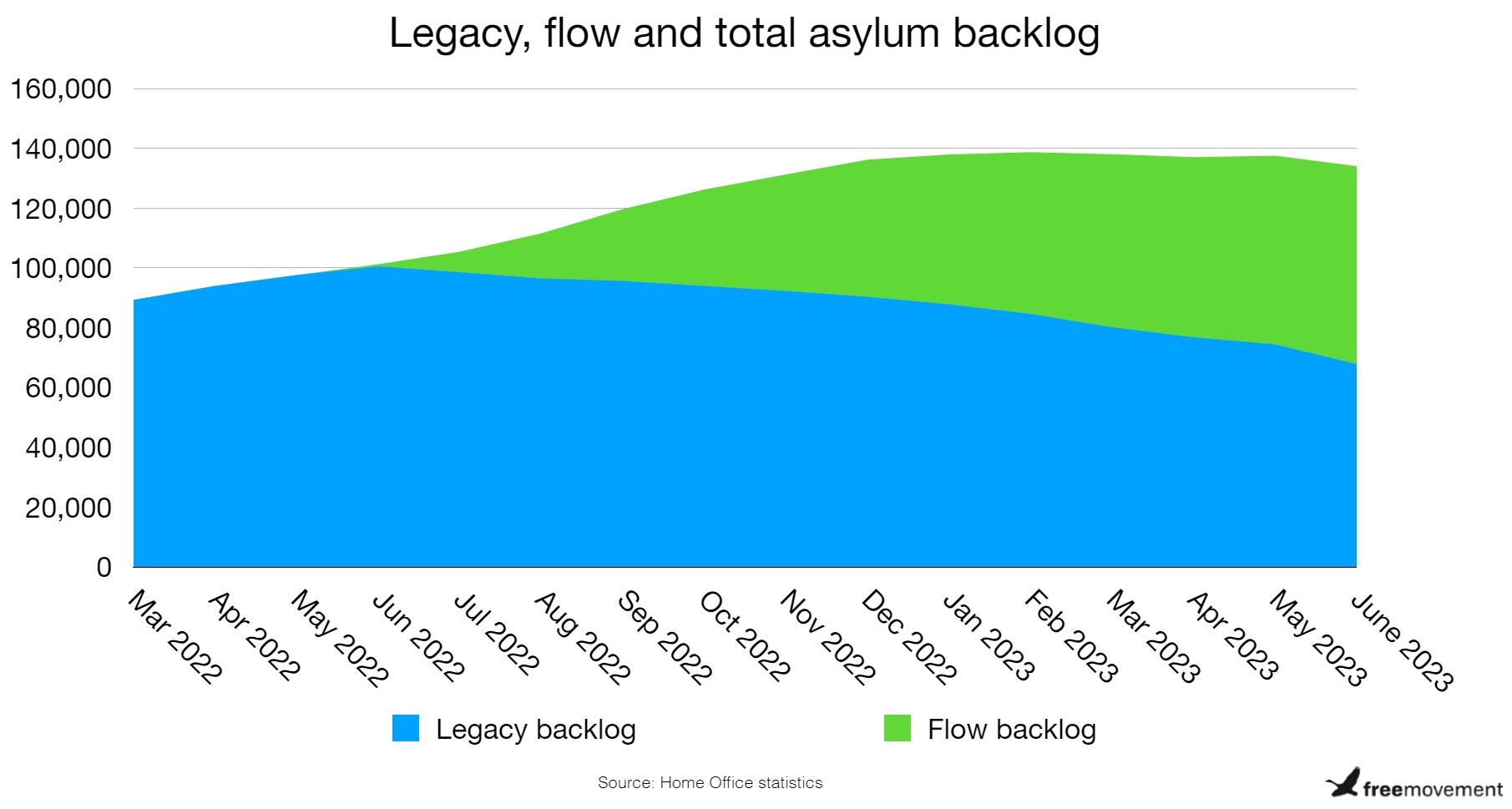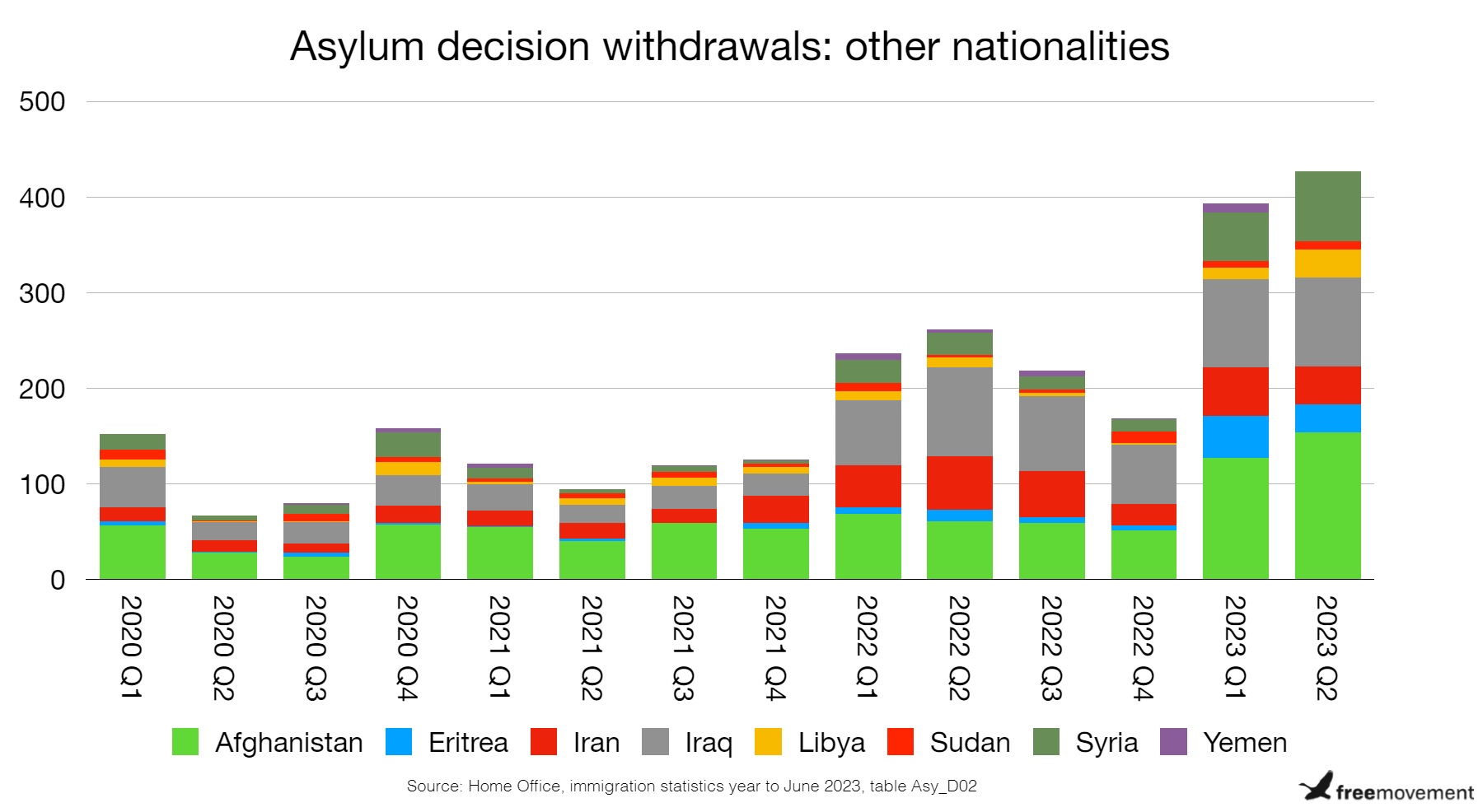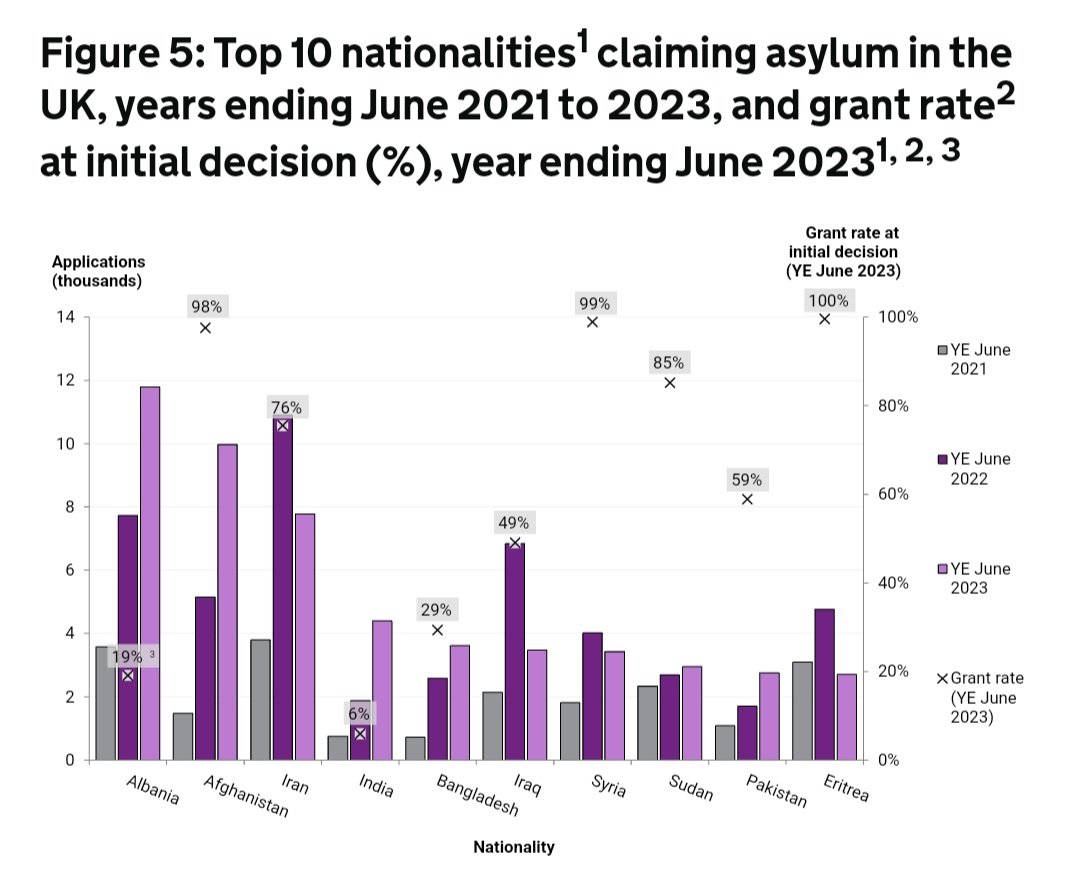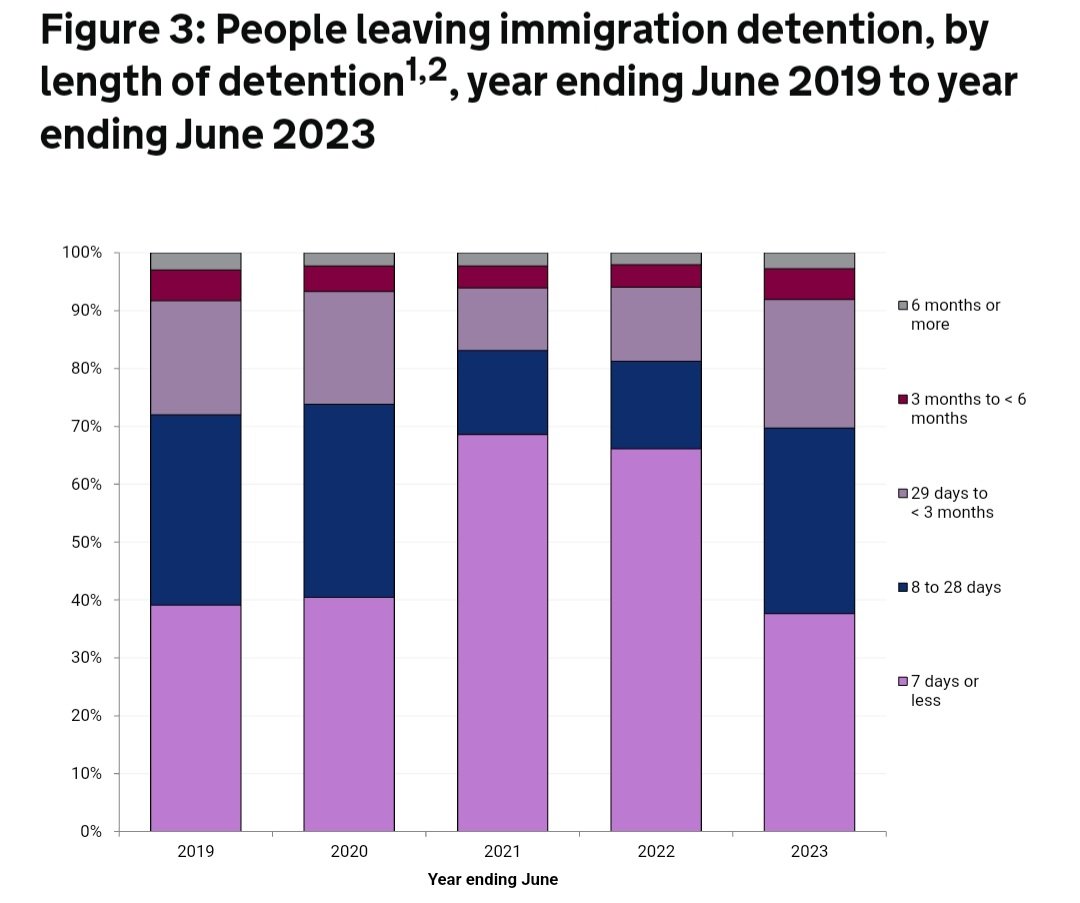- BY Sonia Lenegan

Look closer: our summary of the latest Home Office statistics
THANKS FOR READING
Older content is locked

A great deal of time and effort goes into producing the information on Free Movement, become a member of Free Movement to get unlimited access to all articles, and much, much more
TAKE FREE MOVEMENT FURTHER
By becoming a member of Free Movement, you not only support the hard-work that goes into maintaining the website, but get access to premium features;
- Single login for personal use
- FREE downloads of Free Movement ebooks
- Access to all Free Movement blog content
- Access to all our online training materials
- Access to our busy forums
- Downloadable CPD certificates
Today is the latest publication of quarterly statistics on various parts of the immigration and asylum system, covering the period April to June 2023. The Home Office summary page is here but in my view their summaries should be used with some caution depending on what you are looking for.
Particularly in asylum, things are in such a state of flux that I find it a lot more useful to dig deep into the data table to identify trends rather than use the Home Office summary which tends to cover the past twelve months. Other periods are chosen as suits them (for example of resettlement where they tend to refer to numbers since 2015 presumably in an attempt to disguise the fact that these numbers have floored in recent years).
For example, see this Home Office chart:

In the summary, a drop in Albanian cases is referred to but no further information is given. This chart does not reflect the current position, which is that the top nationality making the crossing this year has been Afghans. There were 898 arrivals from Afghanistan and 28 Albanians in January to March this year, and 576 Afghans and 120 Albanians from April to June (table Irr_D01).
The point is that if there is an area that you particularly want to understand we recommend going to the raw data. We have done that in some but not all of the below (there are many many spreadsheets).
Asylum
Starting with asylum, the overall backlog has increased, but not by much as for April to June 2023 applications (15,698) only slightly exceeded decisions (15,269). Since December 2022 the backlog as a whole has reduced from 136,233 to 134,046 in June 2023.

If the size of the backlog is levelling off then obviously that is good news, but it needs to start dropping considerably faster. On that note it is helpful to look at the size of the ‘legacy’ (i.e. claims made before 28 June 2022) backlog which is the cohort of cases that the PM has pledged to clear by the end of this year (four months to go!).

We can see from the above that the legacy backlog is dropping, but not at a rate that would mean these cases are all concluded by the end of the year. It currently stands at 67,870 cases, down from 90,358 at the end of December when the PM made his commitment. The ‘flow’ (claims made after 28 June 2022) cohort is at 66,176 which is a significant increase from the 45,872 cases at the end of December.
‘Concluded’ was a deliberate choice of words above, as not all cases are receiving decisions. This brings us on to withdrawals, which we have covered recently. Withdrawals have gone down slightly, from 6,068 in January to March this year to 5,810 in April to June. This drop seems to be due to lower number of Albanians being deemed withdrawn. In January to March 4,386 (or 72%) of withdrawals were Albanians but this has dropped to 3,425 (or 59%) for April to June. There has been an increase in withdrawals of asylum claims from countries which have a very high grant for asylum claims.

In fact, the grant rate for Eritreans was 100% for the year to June 2023, 99% for Syrians and 98% for Afghans.

The grant rate for initial asylum claims as a whole is 71% for the year to June 2023, this does not include appeals. The data for appeals for April to June 2023 was not published “due to ongoing work on a new case working system” so I have not included this.
On inadmissibility, again the Home Office summary disguises the true picture. It states that between 1 January 2021 and 30 June 2023 “there were 23 enforced removals of individuals considered for removal on inadmissibility grounds”. Looking at the data in table Asy_09a it can be seen that there have been no removals this year of anyone considered under the inadmissibility process. In year up to June 2023 there have been two.
Again on Afghan resettlement, the Home Office summary says that 21,526 people have been resettled or relocated through the two available schemes. The data shows that 60 Afghans were resettled in the period April to June 2023 (table Asy_D02).
There appears to be some expected data missing from these statistics. A couple of weeks ago the Secretary of State wrote to the Home Affairs Committee on several issues, one of which was people arriving from Albania in small boats. The letter stated “We will begin publishing statistics relating to returns of those arriving in small boats in the next quarterly statistics release in August.” I can’t see these in the irregular migration statistics, which is where I would have expected to see them, so it seems they have not been published. If anyone does find them please let me know.
Detention
Looking at detention, the Home Office summary states “The Illegal Migration Bill received Royal Assent and became the Illegal Migration Act on 20 July 2023, so any effect from the new legislation will not apply to the period covered in this release.” The provisions relating to detention are not in force so it is unclear what effect is expected in future.
The total number of people being detained continues to trend back down following the post-Covid rise. Many people are still detained for very short periods of time, 38% for 7 days or less which seems likely to be unnecessary.

This looks like a reduction for people detained for a week or less but the high figures in 2021 and 2022 were related to the use of immigration removal centres to process new arrivals across the Channel, whereas now Manston short term holding facility is used instead.
Work
As was the case the last time we wrote up the statistics, the big story continues to be the huge uptake of health and care skilled work visas. These have increased by 157% (74,096) in the year ending June 2023 compared with the twelve months before that and were 57% of all worker visas. Around half of these are for care workers.

Visitors
In the twelve months to June 2023 almost 3.3 million visas were granted. Of those, 55% were visitor visas. The top nationalities were Indian (30%), Chinese (13%), Nigerian (6%) and Turkish (6%). It is usually interesting to look at the raw data (table Data_Vis_D02) to see who is being refused. For the period April to June 2023 this includes 40% of Afghans, 46% of Albanians, 55% from Bangladesh, 47% from Eritrea and a whopping 75% of Algerians.
Students
The number of student visas granted has continued to rise. The top five nationalities are from India, China, Nigeria, Pakistan and the United States.
Extensions, settlement and citizenship
Applications for further leave to remain have increased by 78% in the year to June 2023. This is a huge increase, and seems to have been driven by the introduction of the graduate route, where there were 119,816 grants in the year ending June 2023.

The settlement figures appear to be changing quite a bit for the year ending June 2023 when compared to the year before this. Settlement grants to those in a work route have increased by 28% and for asylum have dropped 22%. Refusals have increased to 65% which seems quite concerning.
On citizenship, 6,030 people have applied for British citizenship up to the end of June 2023 under the new provisions in the Nationality and Borders Act 2022 to correct historical unfairness in nationality legislation. The vast majority of the grants (2,160) have been to people connected with the Chagos Islands. A further 125 people have been granted British citizenship under provisions connected to women previously being unable to pass on citizenship at the time of their birth or if their parents were married, and other historic unfairness.
Family
Post Covid recovery of travel and backlog clearance are the reasons given by the Home Office for the 110% increase in family related visas being granted (75,717 in total) for the year ending June 2023. It appears that the high increase in being driven by a few countries with grant rates that well exceed that.

Conclusion
We will cover the statistics on asylum claims based on sexual orientation in a separate post, as these are only published annually. There is a lot still to digest in today’s statistics (not least because of the need to go to the data tables to get the real picture of what is happening), and we will be updating our asylum briefing shortly.
SHARE

